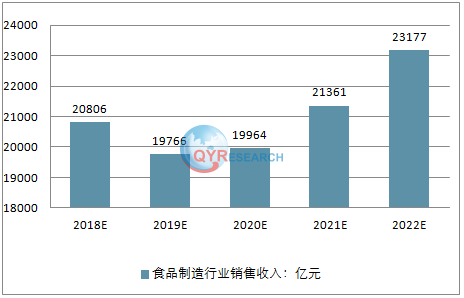Flexible packaged food is a type of food that has been processed, packaged in composite plastic film bags, and subjected to exhaust, sealing and sterilization treatments.
Soft packaged food, commonly known as "soft canned food". A type of food that has been processed, packaged in composite plastic film bags, and subjected to exhaust, sealing and sterilization treatments. It is easy to open, easy to heat, the packaging is light and soft, small in size and easy to carry, making it an ideal picnic food.
Flexible packaging is the main force of the packaging industry. Compared with traditional packaging, a single material does not need to be stripped of different plastics during recycling, which greatly reduces the complexity of the process and facilitates recycling. At the same time, necessary functions such as packaging barrier properties and printability can still be guaranteed.
And from a global perspective. As the global economy gradually recovers, global society's consumer demand for packaging materials is expected to grow further. Based on historical growth analysis, it is initially estimated that the global packaging materials consumption will exceed US$1.2 trillion at a compound annual growth rate of 3.9%.
In the packaging industry, flexible packaging has become one of the most important packaging forms for shelf sales with its brilliant colors, rich functions, and diverse expressions. The progress of the domestic flexible packaging industry has greatly promoted the development of food, daily chemical and other industries. The development of these industries has in turn further boosted the demand for the flexible packaging market, allowing the flexible packaging industry to gain huge market momentum. With the development of functional flexible packaging materials and the continuous improvement of processing technology, flexible packaging is playing an increasingly important role in many fields.
As the trend of consumption upgrading continues to become more apparent, the global flexible packaging market as a whole shows a steady growth trend. In the domestic market, as my country's urbanization level continues to improve, residents' consumption continues to upgrade, and my country's flexible packaging industry's industrial technology continues to update and develop, my country's flexible packaging market continues to expand, and plastic flexible packaging accounts for the vast majority of the market share.
As the per capita disposable income of Chinese residents continues to increase, the consumption power of Chinese residents has significantly increased, and the trend of consumption upgrading is obvious. The demand for flexible packaging of food and beverages will not only remain in the past for portability, but will also pay more attention to transparency, freshness, Higher-quality packaging functions such as non-toxicity, recyclability, degradability and aesthetic design have promoted the continued growth of China's food and beverage flexible packaging market.
At present, with the continuous improvement of my country's national strength, the continuous improvement of the overall industrial scale, and the continuous pursuit of intelligent manufacturing under macro policies, it will simultaneously promote the development of my country's flexible packaging from both the consumer and supply sides. Flexible packaging has become an important part of industrial development.
According to Hengzhou Bozhi, the main application fields of flexible packaging in my country include food, beverage, medicine, cosmetics and other product packaging. In recent years, with the continuous improvement of my country's industrialization level, flexible packaging has become more and more widely used in downstream application fields. With the continuous improvement of production technology in my country's flexible packaging industry, flexible packaging products are developing towards lighter weight and multi-functionality.
From the supply side, my country's flexible packaging industry was affected by the COVID-19 epidemic. Due to the shutdown of some production capacity, the output dropped from 7.326 million tons to 7.174 million tons. With the rapid economic recovery, the output gradually recovered to 7.279 million tons. .
From the demand side, my country's flexible packaging industry sales dropped from 7.032 million tons to 6.958 million tons due to the COVID-19 epidemic. Driven by both domestic and foreign markets, industry sales increased to 7.06 million tons.

According to data, the size of my country's plastic flexible packaging market is US$12.44 billion, and the size of my country's plastic flexible packaging market has grown to US$17.03 billion.
Over the past few years, developments in science and nanotechnology have transformed the food and processing industries. Nanotechnology is mainstreaming in the development of functional foods, preservation, packaging, processing and food production. Food packaging is the earliest commercial application of nanotechnology in the food field.
Rising living standards in emerging economies such as Brazil, South Africa and Russia have increased consumer purchasing power, stimulating demand for high-quality products. As consumer lifestyles change and the demand for environmentally friendly packaging materials increases, the demand for flexible packaging will increase in the coming years.
Consumers, especially in North America and Europe, prefer packaging that is lightweight and beautiful. This will increase the usage of plastic-based flexible packaging over the forecast period.
Plastic flexible packaging is widely used in the food and beverage industry as they can come in a variety of forms and shapes. Most of the plastic packaging used by industries over the past few years has come from fossil fuels. Plastic demand will continue to be strong.